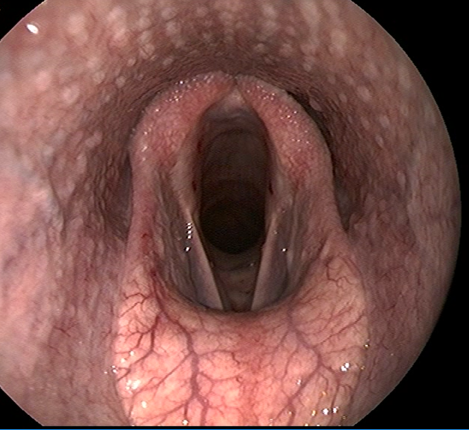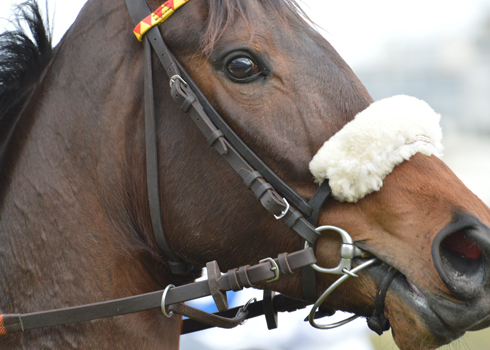Recurrent Laryngeal Neuropathy (RLN)
WHAT IS IT?
The term “Roarer” refers to horses with a condition called Recurrent Laryngeal Neuropathy (RLN) or Laryngeal Hemiplegia which affect the upper airway of the horse. The term “Roarer” is used because of the noise that is often heard by horses with this condition during work, or strenuous exercise. This disease causes a decrease in airflow to the lungs and can cause exercise intolerance.
The larynx (similar to the voice box or Adam’s apple in humans) is the structure that connects the nasal passage to the trachea (also known as the windpipe). It consists of a group of cartilages that allow air to pass into the trachea and protect the airway during swallowing. RLN is caused by paralysis of one or both of these cartilages (called the arytenoid cartilage) due to lack of innervation causing atrophy (wastage) to the muscle that moves the arytenoid cartilage. The left arytenoid cartilage is the most common side affected (up to 95%). In a normal horse, the arytenoids allow maximal airflow into the trachea during abduction (the outward movement of the arytenoid cartilages to open the entrance into the trachea). Horses with RLN have paralysis of the arytenoid cartilage, which prevents them from abducting or opening their throat during inspiration. This leads to decreased airflow into the lungs due to obstruction from the paralyzed cartilage resulting in respiratory noise and exercise intolerance.
WHO DOES IT AFFECT?
RLN is most commonly reported in the racing Thoroughbreds but it also occurs in other performance horses including Warmbloods, Draft horses, Standardbreds, and Quarter Horses. It is commonly seen in taller male horses, usually greater than 15 hands. While the disease is not life-threatening, there are several surgical options available to treat your horse if they are experiencing clinical signs and most of them have a good prognosis for improving your horse’s performance.
- Usually seen in horses between 3–7 years old
- Exercise intolerance that has gotten worse over weeks to months
- Classic “whistling” or “roaring” noise heard during exercise (usually while cantering or higher activity)
- Sound of the horse’s whinny may change
- Gasping for breath after exercise
- Veterinarians may note muscle atrophy (or shrinking) at the throat latch area
HOW IS IT DIAGNOSED?
RLN is a graded on a scale of 1–4, with 1 being normal and 4 being complete paralysis of the cartilage. Standing endoscopy can diagnose cases that are grade 3–4 and some cases that are grade 2. High-speed treadmill endoscopy or over ground dynamic respiratory examination may be necessary to diagnose cases that are questionable on standing endoscopy and can be used to ensure that no other concurrent upper airway problems are contributing to the exercise intolerance or respiratory noise.

Endocsope images of horses with different severities of Rrecurrent Laryngeal Neuropathy (RLN)
WHAT IS THE TREATMENT?
Treatment recommendations vary depending on the severity/grade, the breed, the age and the use of the horse, and it is important to note that may low grade ‘roarers’ can continue to perform at a high level without surgery. However, surgical options for treatment are available and are often recommended if performance has become limited due to the issue, the most common of which is called a prosthetic laryngoplasty, or “tie-back surgery” or a nerve muscle pedicle (NMP) graft.

Normal Larynx of a Horse

Dr Michael Wraight using an endoscope as a diagnostic tool

